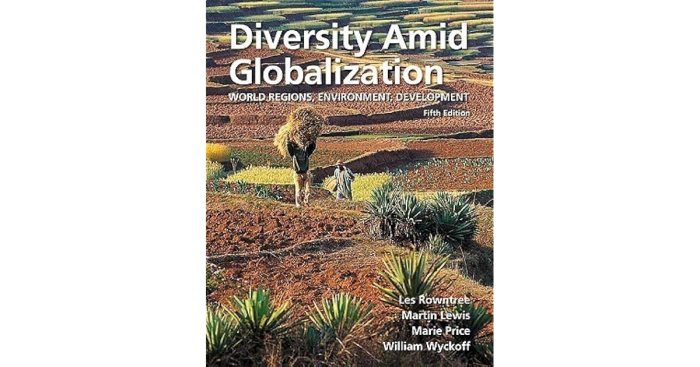Diversity amid globalization world regions environment development 7th edition – Diversity Amid Globalization: Regional Environments, Development, and the 7th Edition explores the intricate interplay between globalization, regional environments, and sustainable development. This comprehensive text provides a nuanced analysis of the challenges and opportunities presented by globalization’s impact on ecosystems, economies, and cultures worldwide.
The book delves into the environmental impacts of globalization, examining the varying effects of pollution, climate change, and deforestation across different world regions. It also explores the role of international organizations and agreements in addressing these pressing issues.
Globalized Diversity and Regional Environments

Globalization, the interconnectedness and interdependence of the world’s economies, cultures, and environments, has profoundly impacted regional environments. The increased movement of goods, people, and ideas has both benefited and challenged ecosystems around the world.
Examples of globalization’s effects include the spread of invasive species, such as the zebra mussel in the Great Lakes, and the increased pollution of coastal areas due to shipping and tourism.
Globalization also presents opportunities for environmental conservation. For instance, the sharing of scientific knowledge and technology can help address transboundary environmental issues like climate change.
Environmental Impacts of Globalization
Globalization has led to significant environmental impacts, including:
- Pollution: Industrialization, transportation, and agricultural activities have contributed to air, water, and soil pollution in many regions.
- Climate change: The burning of fossil fuels has increased greenhouse gas emissions, leading to global warming and its associated impacts.
- Deforestation: The expansion of agriculture, logging, and urbanization has resulted in the loss of vast forest areas, particularly in tropical regions.
These impacts vary across world regions due to differences in economic development, environmental regulations, and cultural practices.
International organizations, such as the United Nations Environment Programme (UNEP), play a crucial role in addressing these impacts through agreements like the Paris Agreement on climate change.
Regional Development in a Globalized World
Globalization has influenced regional development patterns in several ways:
- Economic growth: Globalization has led to increased trade and investment, benefiting some regions economically.
- Inequality: However, globalization has also exacerbated economic inequality within and between regions.
- Urbanization: The movement of people from rural to urban areas has accelerated due to globalization, leading to the growth of megacities.
Globalization presents challenges and opportunities for sustainable development. On the one hand, it can facilitate the transfer of technology and knowledge to developing regions. On the other hand, it can also lead to increased resource consumption and environmental degradation.
Cultural Diversity and Environmental Conservation
Cultural diversity plays a complex role in environmental conservation. Cultural practices can both protect and harm the environment:
- Traditional knowledge: Indigenous communities often possess valuable knowledge about sustainable land management practices.
- Cultural values: Cultural values can influence attitudes towards nature and conservation.
- Cultural practices: Some cultural practices, such as the burning of fossil fuels for religious rituals, can contribute to environmental degradation.
Cultural diversity can promote sustainable development by fostering respect for different perspectives and promoting local solutions to environmental problems.
Comparative Case Studies of Environmental Development, Diversity amid globalization world regions environment development 7th edition
| Region | Pollution levels | Biodiversity | Energy consumption |
|---|---|---|---|
| North America | High | Moderate | High |
| Sub-Saharan Africa | Low | High | Low |
| Europe | Moderate | Moderate | Moderate |
This table compares environmental development in three world regions. North America has high pollution levels but moderate biodiversity and high energy consumption. Sub-Saharan Africa has low pollution levels but high biodiversity and low energy consumption. Europe has moderate levels of pollution, biodiversity, and energy consumption.
Factors contributing to these differences include economic development, environmental regulations, and cultural practices.
FAQs: Diversity Amid Globalization World Regions Environment Development 7th Edition
What is the primary focus of the 7th edition of Diversity Amid Globalization?
The 7th edition focuses on the interplay between globalization, regional environments, and sustainable development, examining their impacts on ecosystems, economies, and cultures worldwide.
How does the book address the environmental impacts of globalization?
The book explores the varying effects of pollution, climate change, and deforestation across different world regions and discusses the role of international organizations and agreements in mitigating these impacts.
What is the significance of cultural diversity in environmental conservation?
Cultural diversity plays a crucial role in environmental conservation, as cultural practices can both protect and harm the environment. The book examines the relationship between cultural diversity and sustainable development.
